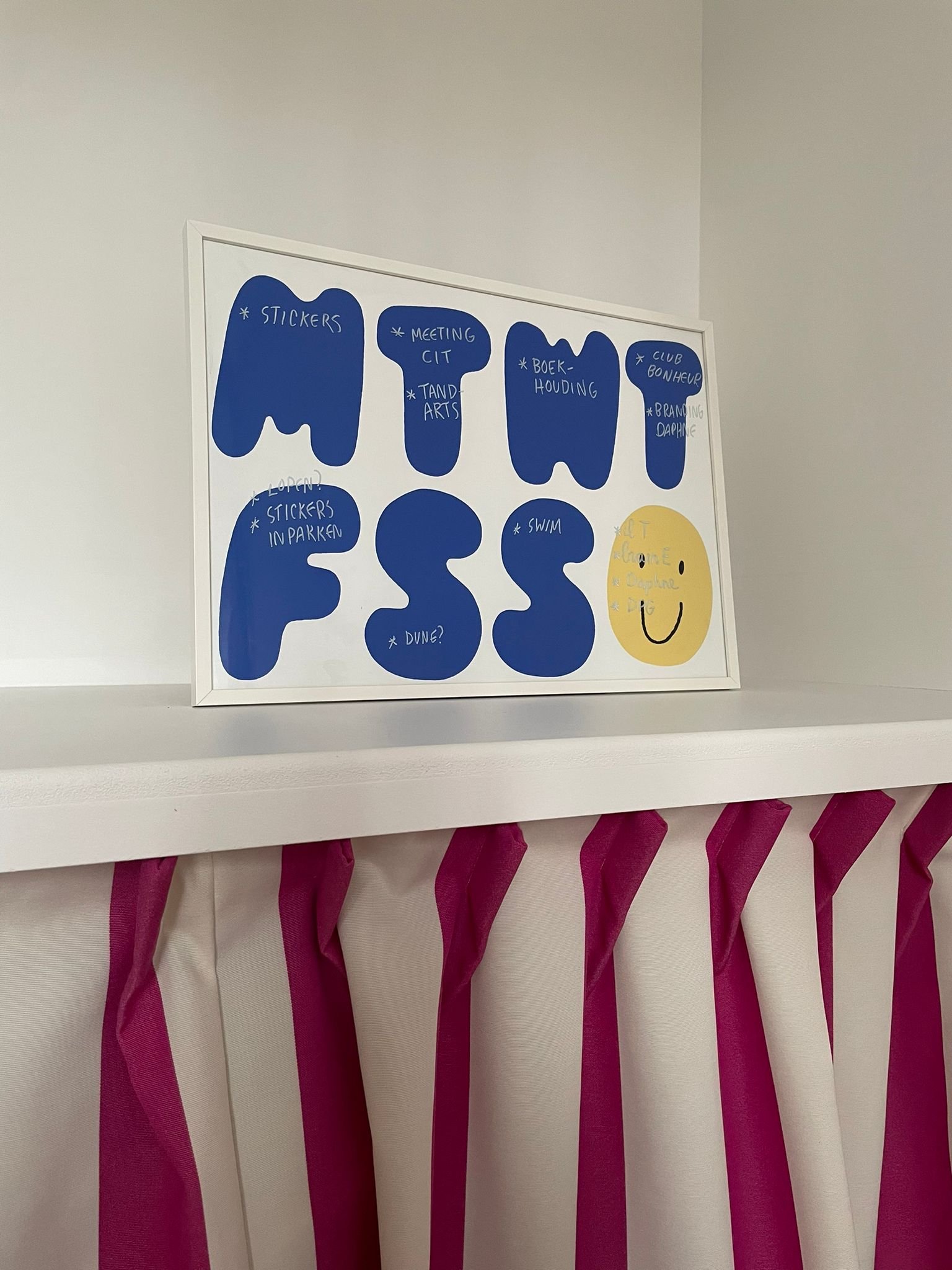Voices of my coachees:
“My studio is full of unfinished projects. My head keeps coming up with new,‘brilliant’ ideas.”
“I’m so easily distracted.”
“I need a lot of variation in my work, in order to keep myself entertained.”
“I need to see all my running projects in front of me, just to keep track of what I’m working on.”
When I was reading this interesting article (in Dutch) about neurodiverse creatives, I realised I needed to address this topic in my newsletter. Quite a lot of the creative professionals I coach, carry characteristics of neurodiversity. Some of them are diagnosed with ADHD. Others are not, but their struggles and feelings of despair are hugely similar.
Turns out, I love neurodiverse brains and I love to search for (and - of course - to actually find) ways to get them more organised, structured & happy. Without losing the needed chaotic/creative space in which they make their best work.
So, with their permission, I ‘d like to give 3 examples. 3 creative professionals I had the honour to welcome in a coaching trajectory. 3 cases that show: there are methods and solutions to make sure that creations don’t get stranded in a studio.
And before I dive into the cases of Joris, Axelle and Gwen, I would like to quote one of the interviewees in the article. Designer Ivana Bogenna says: “I am often labeled as stubborn, but for me, ADD is my superpower. It is just part of my creative thought process.”
Case 1 | Joris | Object designer & curator at Belgiandesignpavilion
Joris is internationally renowned as an object designer and travels a lot for work. He’s got tons of projects, running simultanously. He says: ‘When I’m in a good flow, I’m highly productive. I’m able to start and keep up with a ton of projects. But, when my flow isn’t good, I suffer from anxiety. I bump into a wall & feel highly overwhelmed.’
During the trajectory we decomposed the roots of this. He now has a clear ‘way to go’ when he notices that the overwhelm is about to take over. ‘I now know that these feelings are temporary. It helps to then focus on the first small step I need to take, instead of looking at the whole project. I also found a way to arrange my project ideas and to pick them up more thoughtfully. One after the other. It gives more space, more clarity. I can breathe.’
picture by: Thibeau Scarceriaux
Case 2 | Axelle | Illustrator
Axelle wants to build a career as an illustrator. She knocked at my door because she missed structure and overview. The search started. A search to find what works for her. And as everyone’s solution is different, every search to find them is new and exciting.
First, I wanted Axelle to have an calendar to hold on to. So I suggested (and she tried) a digital agenda. But this failed, because Axelle is super visually oriented. After a couple of trials/errors - yes, we did try the sticky notes method - she created a weekplanner in a big frame. A beauty, I must say - I just love it! She now writes her tasks onto the glass and puts the planner within eyesight. Brilliant.
picture by: Buro Bonito
Case 3 | Gwen | Interior architect & creative activist
Gwen is an interior architect, teacher and creative activist. She experiences - just like Joris - the highs and lows of a neurodiverse brain. She now knows how to handle these lows and has insight in the cycle - which is connected to her monthly cycle as well. ‘I know I need to put myself and my rest first when I’m in a low mood, even if that means saying no to fun times with friends. I also take half a dose of rilatine 2 days a month at my worst time in my cycle ànd if I have to do a lot that day. Exercising regularly helps a lot too! '
picture by: studio NUNU
So, dear reader, if all this sounds familiar to you, start by keeping this in mind:
Be patient with yourself. Try to understand how your brain functions, without judging. A bigger knowledge of how & when you’re productive versus when you’re drained, will get you to make decisions that suit you better.
Be patient with the process. It is possible to add more structure where needed. But the quest for a method that works for you can take some time. It’s totally fine to experiment a while with ways to organise your work. To ditch the ones that are not working. And to pick up a new way. Until you find your way (for a while ;))
Be clear to clients and (business)partners about your way of working. It helps them to understand why some things happen.
If you’re about to knock yourself down because of how unproductive you feel, think about five years ago. Where were you then? What progress did you make? What creations did you shape? Be proud of yourself. You’re incredible.




